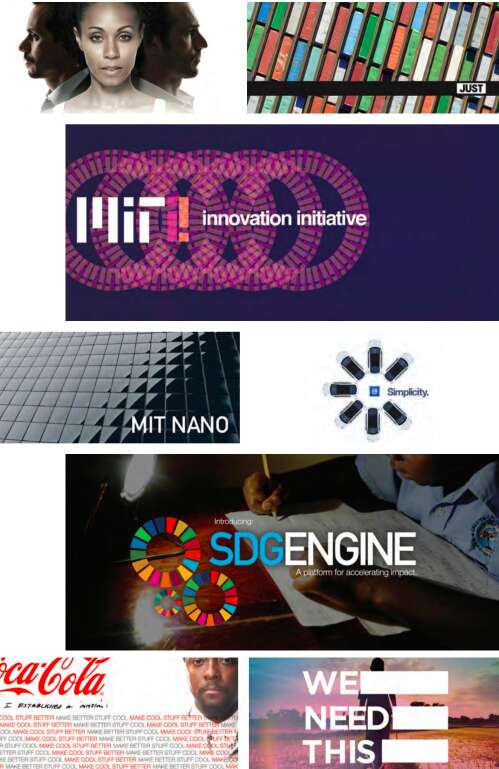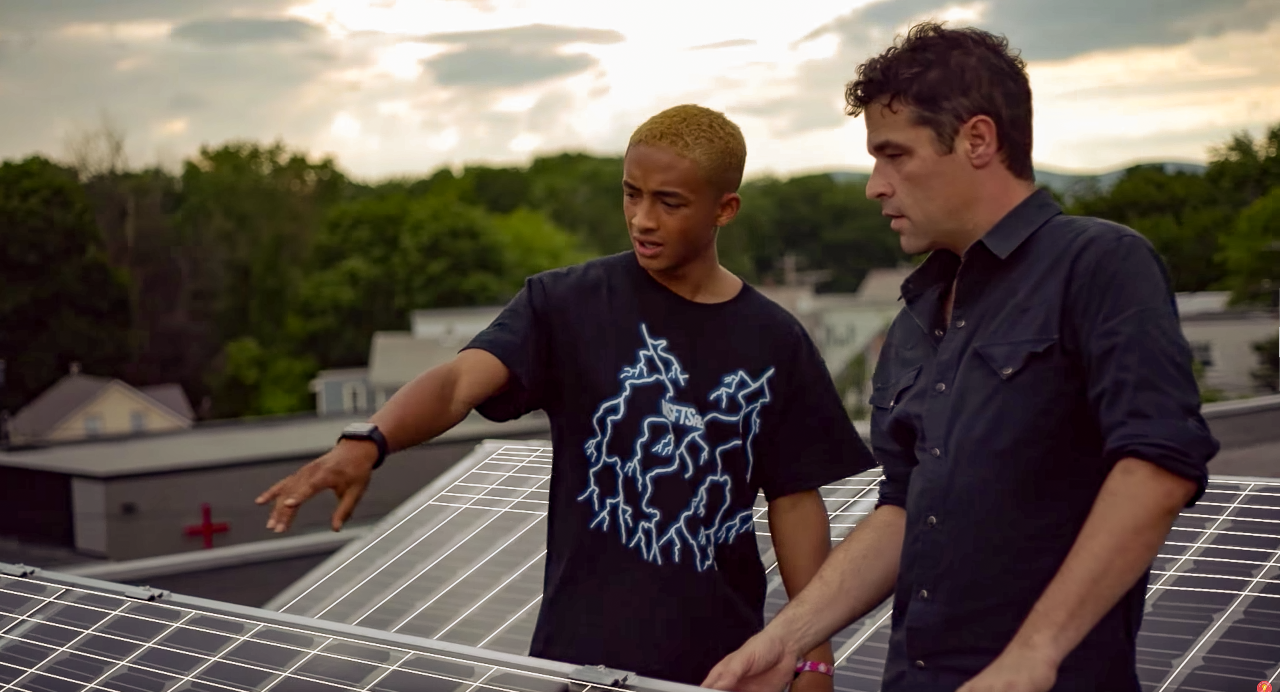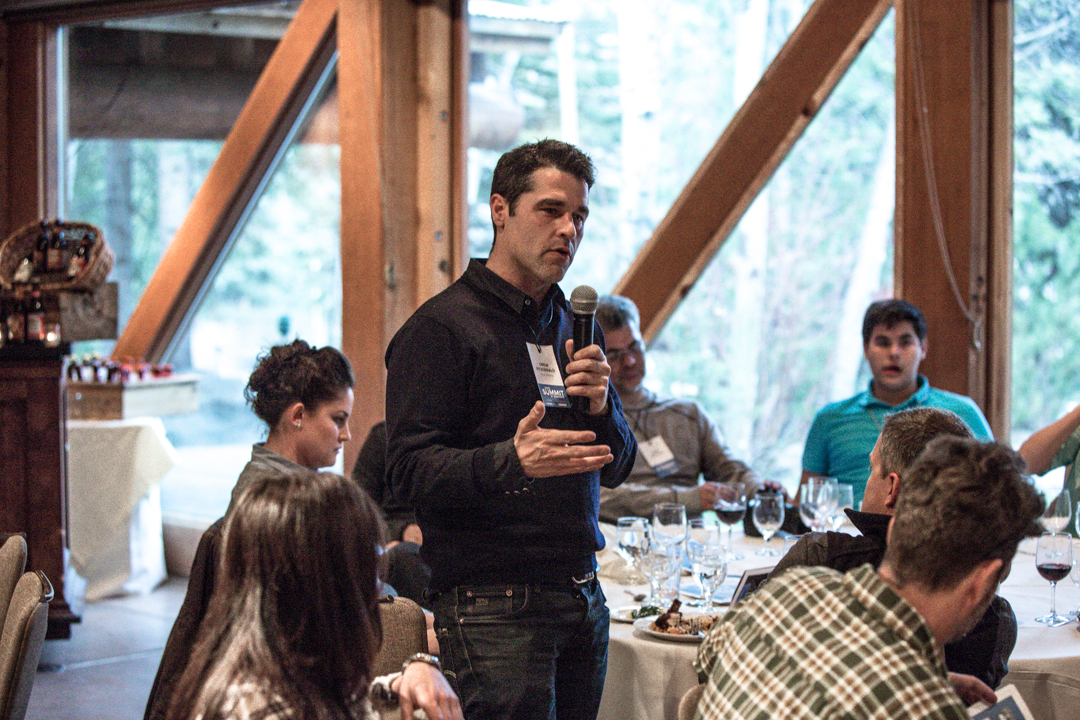Glens Falls native Drew FitzGerald has a running joke with a friend who’s the former head of the material science department at MIT.
“If I call him and say, ‘Hey, Jeff, what are you working on this week in the lab?’ he’ll tell me that he’s fabricating nanoscale desalinating graphene meshes,” FitzGerald says. “And I’ll say, ‘No you’re not—you’re reducing gender-based violence in the developing world because your low-cost solution allows women not to have to go out at night and forage for water, and if they’re not out foraging water, they can have access to education.’”
This is the way FitzGerald’s mind works: He takes a concept only a small number of people understand, and explains why it matters in terms everyone—even those of us without a PhD—can wrap our brains around.
FitzGerald is a storyteller, but not in the way C.S. Lewis and Stephen King are storytellers. The stories FitzGerald tells have real-life, future-of-the-human-race-level implications. He tells stories about nuclear fusion, pollution, water insecurity and philanthropy to the planet’s wealthiest men and women, and a lot of times, they listen.
This knack for telling a convincing story has led FitzGerald, improbably, from art classes at Syracuse University to major music label studios, A-list celebrities’ homes, the White House and state-of-the-art labs at MIT and UCLA. He’s worked with innovators and organizations all around the globe, but has always kept one foot in upstate New York; not only does he still have many close friends here, but his company JUST—more on that later—is based right in his hometown. Fresh off a few days at NYC Climate Week this past September, FitzGerald spoke at the Warren County Economic Development Corporation’s annual luncheon, and shared some big news. After 25 years in New York City and Los Angeles, he’s moving—with his wife and daughter—back to Glens Falls in 2025.
Of all the stories FitzGerald tells, his origin story is one of the best. After graduating with an MFA from Syracuse University’s College of Visual and Performing Arts, FitzGerald went to New York City feeling dreadfully underprepared for the dawning world of computer-aided art and design. So, he got a job at a Kinko’s-like store in SoHo that rented computers, and began teaching himself graphic design. The offices of hip hop/R&B recording label Def Jam were located above the store, and before long, art directors started coming down to ask FitzGerald for design help. His first paid gig as an artist (“I think I got $75”) was to create a globe for a Craig Mack album cover. He rode his new skills all the way to an art director position at MCA Records.

At MCA, FitzGerald created album covers for Mary J. Blige, Bad Boy, B.B. King and Patti LaBelle, and went on to do work for Lionel Richie, Enrique Iglesias, Queen Latifa and Will Smith, with whom he developed a friendship.
But it was a call from Chevrolet that set his career trajectory on a new path.
“After I had done everything from records to TV to movies, I got a little bit tired of just making stuff that was cool,” he says. When the opportunity to work on marketing the new Chevy Volt arose, FitzGerald dove in wholeheartedly. “I adhere to the mantra of, if you want to do a great job for a client, you have to understand the business almost better than the client themselves,” he says. “So I just fell in love with the concept of electric cars. I became this nerd for clean technology, and realized there was an area for me to occupy in that space: simplifying and communicating the values, benefits and impacts of new technologies. If left to their own devices, you would just have engineers talking about engineering stuff to other engineers.”
That, FitzGerald found, was exactly what was going on at the Massachusetts Institute of Technology: Brilliant students and faculty members were working on potentially world-changing technologies, but no one was telling said world about them. As a result, many of the projects would never get past the conceptual phase, due to a lack of funding. (This is something clean tech innovators call “the valley of death.”) Of the many innovations FitzGerald saw taking shape at MIT, two stood out: a fledgling project aimed at making nuclear fusion practical, scalable and commercially feasible, and a project led by then-graduate student Sarah Kearney (née Wood). By way of a clarification to the US tax code, Kearney had found an ingenious way to use philanthropic capital (i.e., dollars from the Bill & Melinda Gates Foundation) to support early-stage, for-profit start-ups in the clean energy space.
For the fusion project, FitzGerald did some translational work—translating scientific findings into practical results that benefit humans—that helped raise $100 million. (Yes, one hundred million dollars.) Today, it’s grown into a for-profit company called Commonwealth Fusion Systems that’s the world’s largest commercial fusion energy company. And the other project? FitzGerald encouraged Will and Jada Smith to give Kearney an operational grant through their foundation that allowed her idea to come to fruition. The first start-up her nonprofit, Prime Coalition, was able to support is called Quidnet, a company that, essentially, stores energy underground. Both Quidnet and Commonwealth Fusion Systems went on to be invested in by Bill Gates, by way of his billionaire investment firm Breakthrough Energy.
Around the time all that was happening, FitzGerald was doing some innovating of his own. Or, rather, with a kid you’ve probably heard of.
“I had been sort of mentoring Will and Jada’s kids, Jaden and Willow,” FitzGerald says. “They were young at the time—11 and 9—and they would go to their dad and say, ‘Why aren’t we powering the house with solar power?’ or ‘Dad, there’s a huge garbage patch of plastic in the Pacific.’ And he’d say, ‘Go talk to your mom.’ Jada would be more empathetic and would say, ‘I’m not indifferent to your concerns, kids, but maybe you should talk to somebody like Drew.’”
As an exercise, FitzGerald helped the kids come up with a company—a business that bottled water in plant-based cartons that were much more environmentally friendly than plastic bottles. When they presented their company project to Will and Jada, the Smiths liked the idea so much that they encouraged FitzGerald and his then-pint-sized business partner, Jaden, to make it into a real company. And with that, JUST was born.

Based in Glens Falls (FitzGerald “just” so happens to be from a town named for its abundant waters) JUST is a company founded on the ethos of “business for good.” The cartons themselves create 74 percent less carbon emissions than similarly sized plastic bottles, and the aluminum bottles JUST’s sparkling products come in can be recycled infinitely. Then there’s the not-so-small matter of where the water actually comes from.
“We started looking at how we could purchase water from the City of Glens Falls at a fair and equitable rate,” FitzGerald says. “We didn’t want to come in and not pay anything for water, just because we’re creating jobs. That’s how big water works—a Nestlé plant or a Coca-Cola plant is creating all these jobs in the community, so they’ll negotiate to pay next to nothing for the water that they put in their bottles. But Grandma and Grandpa who live across from the plant pay so much more for their water.”
In the end, JUST and the City of Glens Falls agreed on a rate that’s six times more than that of the next highest water customer. Over the course of the last 10 years, FitzGerald estimates that JUST has contributed nearly $1 million back into the City of Glens Falls through this arrangement.
Unsurprisingly, JUST is a B Corp—a certification that indicates that a for-profit company meets rigorous standards of social and environmental performance, accountability and transparency. (Other well-known B Corps include Patagonia and Ben & Jerry’s.) But FitzGerald’s for-profit company was also the launching pad for him to dive into the nonprofit water sector.
If you haven’t already noticed, FitzGerald doesn’t exactly half-ass stuff. Remember how invested in electric cars he became while working for Chevrolet? Now imagine that, but for a company he owns. Unsurprisingly, in the process of launching and running JUST, FitzGerald became obsessed with water—specifically, the problems the world is facing regarding water. Yes, the climate change–caused threat of rising sea levels and extreme weather (which FitzGerald identifies as one of the reasons he’s moving back to upstate New York), but most notably, the fact that not everyone in this country has access to clean drinking water.

So, naturally, he went to Flint.
Four years after the city’s water source was found to be poisoning residents with high levels of lead, the State of Michigan ended bottled water distribution to Flint. When FitzGerald arrived in 2018, he found community organizations—like churches—had been left to do the job themselves. “They had their 60-, 70-, 80-year-old deacons out in the church parking lot on a cold day handing out cases of bottled water,” he says. “That comes at an expense. It’s back-breaking work. People would come and put two cases of water in their trunk. It wasn’t dignifying. So we were like, let’s engineer something.”
One of FitzGerald’s partners fabricated the first Water Box—a portable, four-stage filtration system that can deliver 10 gallons of clean, toxin-free water per minute, for free—and donated it to a church in Flint. Since then, more than 30 Water Boxes have been placed in water-insecure places across the country, including Jackson, MS; Newark, NJ; Skid Row in LA; and Puerto Rico. A smaller version called The Water Spot is providing safe drinking water at public schools in low-income communities. Both initiatives fall under FitzGerald’s nonprofit, The Water Genome.
Charitable work is in FitzGerald’s blood; his father served as president of the YMCA, and his mother was the director of the Tri-County United Way for 13 years. So while he’s dedicated much of his career to the for-profit impact sector, he knows just how vital the work done by nonprofits, like The Water Genome, can be.

These days, though, the for-profit world seems to be taking a page out of the nonprofit world’s book, and vice versa. “Philanthropy has really grown up over the last 10 years,” FitzGerald says. “Brighter, smarter people are pulling the nonprofit section of a for-profit company more towards the center, because investors want to know about it. Like Apple: The lithium that’s in your iPhone—where did it come from? Is it from the Congo? How do we recycle it? The impact-oriented purview is becoming part of the corporate ethos. JUST Water is a B Corp. That wasn’t there before. There wasn’t 1% for the Planet. Impact and giving back has really taken a shining role in both start-ups and established companies.”
On the flipside, nonprofits are becoming more like for-profit companies in the ways they allocate resources to have the greatest impact. Previously, the tradition was to insist that as much of a charitable donation as possible—say, 99 percent—would go directly toward programming (i.e., doing good in the community), and only 1 percent would go to overhead costs (i.e., paying staff). “That’s not the right way to do it,” FitzGerald says. “Because, let’s say some bright girl has two job offers on the table. She can go and make a quarter of a million dollars at JP Morgan. But she really cares about homelessness. If she wants to be a compensated employee at Habitat for Humanity, she’ll probably make $60,000. This is a very talented woman who could do amazing things for Habitat, but because of the overhead versus program dilemma, we’re not able to attract as much talent into the philanthropic sphere, even though that talent wants to be there.”
In recent years, that overhead-versus-program paradigm has begun to shift, with philanthropists—and nonprofit boards of directors—recognizing that spending more money on overhead will actually allow nonprofits to scale their offerings and have a greater total impact.
In returning home to Glens Falls, FitzGerald will bring with him a renewed focus on a renewable resource upstate New York has had all along: water. For hundreds of years, this area’s waters have been attracting humans, from the indigenous peoples who believed our mineral waters were a gift from the gods, to the city folk who flocked to “take the waters” at Saratoga’s European-style spa resort, to all of us who vacation on Lake George today. In the future, with what FitzGerald has planned, people may flock here for jobs related to water.

“I would like to make the 518 area an East Coast, if not global, home for the production of water innovations and clean tech innovations,” he says. One such innovation that could end up being produced here? FitzGerald’s own Drop sensor, a low-cost, real-time water quality monitor that can determine if the water that just came out of your sink is safe to drink. While contaminated drinking water isn’t something we really have to deal with in Saratoga Springs or Glens Falls, 77 million Americans—many of whom come from low-income and minority communities—get their drinking water from a system that reported violations of the Safe Drinking Water Standards. In other words, they can’t blindly trust that their tap water is safe to drink.
“We’re in a world where we can’t hide from problems as maybe some people did back in the day,” FitzGerald says. “We have honest-to-goodness challenges in front of us. We’re in an era where there is always great work to be done.” Luckily, we have people like FitzGerald who are ready and willing to do it.
